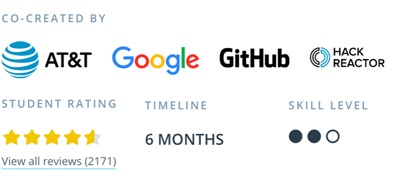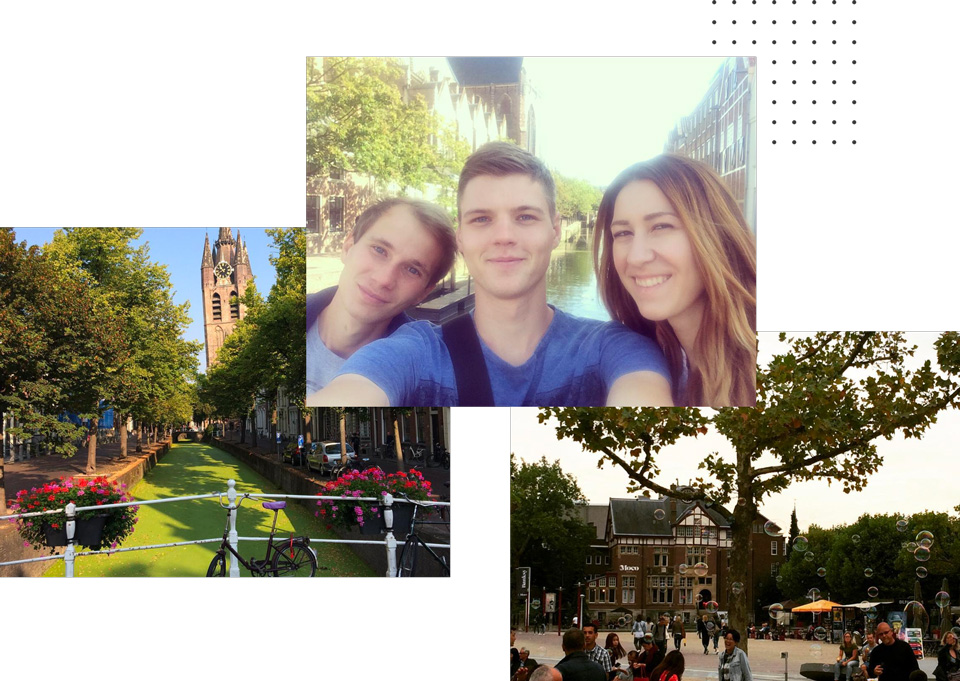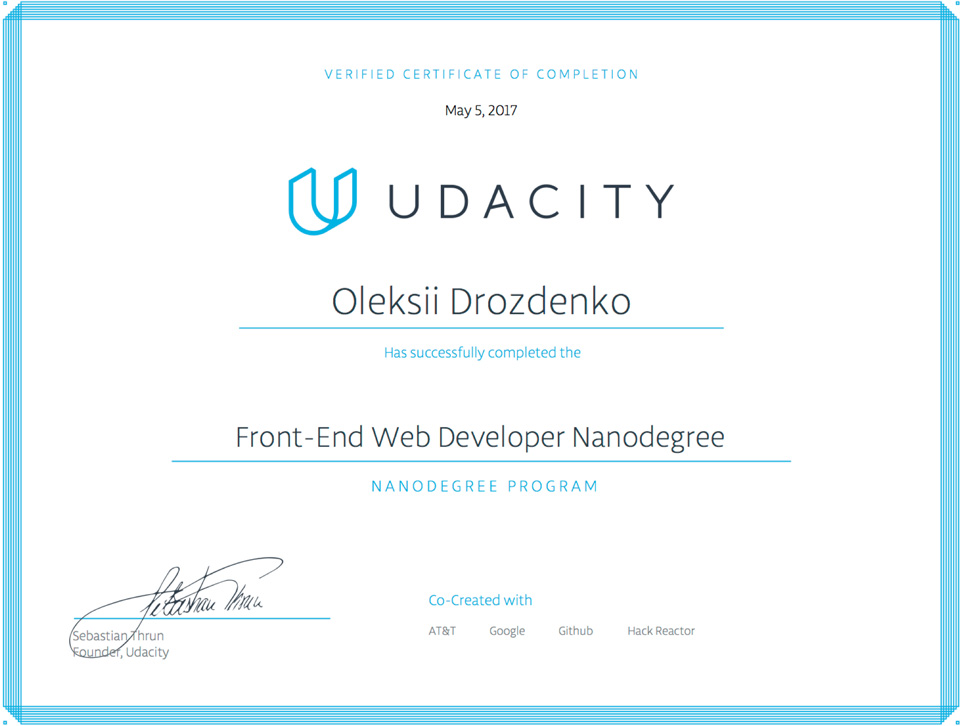
Being labeled as a “Designer" places certain limitations. I prefer thinking about my role rather as a Problem Solver or a Maker. It gives me the power to shift focus from professional issues like “Sketch vs. Figma” towards helping businesses and users in achieving their goals. So at some point in my career, when I felt an urge to learn how to ship production code, I didn’t ask myself a question “Should designers code?” — by default, the answer was “Why not?”.

Learning how to write decent code is a time-consuming exercise. It requires discipline, dedication, and practice. Lots of practice. I’ve tried Codecademy, Code School, Udemy, Skill Share, Treehouse, Coursera. Some were better than others, and some were ewhh… On completion, I didn’t feel ready to be a professional developer. There were too many missing pieces. One day I’ve come across a Front-End Web Developer Nanodegree by Udacity - “…an innovative curriculum path that is outcome-based and career-oriented. Courses are built with industry leaders like Google, AT&T, and GitHub”. 6 months, $200/month - felt like a huge commitment. I jumped on board the next day.

Portfolio Website
Develop a website using Bootstrap CSS framework and responsive image techniques.

Interactive Resume
A resume application that uses jQuery’s to populate data dynamically from a JSON file.

Arcade Game Clone
Use JavaScript, HTML5 Canvas, and a provided engine to recreate an arcade game.

Website Optimisation
Optimize a site so that it runs at 60 fps and achieves 95 points on Google PageSpeed.

Feed Reader Testing
Use Jasmine testing framework to write and pass all tests for an app that reads RSS feeds.

Mapping Application
The final project - read more about the details in the paragraph below.
The final project was a challenge. I was asked to build a complex responsive mapping application using the Knockout framework, Google Maps API, and Flickr API. So I decided to bring in some fun. Last year I visited one of my best friends who lives in Delft, The Netherlands. We had a fantastic trip around the country. And I immediately fell in love with this place. To help others explore the real Netherlands, I decided to show these unique places on the map, fetch juicy pictures from Flickr and provide with a simple navigation.
All data APIs used in the project loads asynchronously and errors are handled gracefully. Clicking a marker on the map opens more information about that location, clicking a name in the list view opens the information window for the associated marker. The list of places is filterable with a text input. And filtering the list also filters the markers on the map.


The Nanodegree has given me an excellent foundation, and more importantly, it has shown me a clear path I need to take to become a better professional. I finally feel confident enough to work on commercial projects — two are already completed, many more to come.